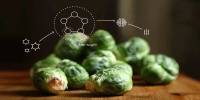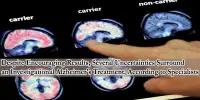In recent years, public health initiatives, surveillance, and vaccination have all contributed to significant success in lowering the effect of seasonal flu outbreaks produced by human influenza viruses A and B. However, a hypothetical outbreak of avian influenza A (also known as ‘bird flu’) in mammals, including humans, poses a serious threat to public health.
The Cusack group at EMBL Grenoble investigates the replication of influenza viruses. A new study from this group gives information on the various alterations that the avian influenza virus can go through to replicate in mammalian cells.
Some avian influenza viruses can cause serious illness and death. Fortunately, fundamental biological distinctions between birds and mammals typically prevent avian influenza from spreading to other species. To infect mammals, the avian influenza virus must evolve to overcome two major barriers: the ability to enter the cell and proliferate within it. To cause an epidemic or pandemic, it must be able to spread amongst humans.
However, avian flu-related contamination of wild and domestic mammals is becoming more widespread. Of particular worry is the recent unexpected infection of dairy cows in the United States by an avian H5N1 strain, which has the potential to become endemic in cattle. This might facilitate adaptation to humans, and indeed, a few cases of transmission to humans have been reported, so far resulting in only mild symptoms.
The key difference between avian and human ANP32 is a 33-amino-acid insertion in the avian tail, and the polymerase has to adapt to this difference. For the avian-adapted polymerase to replicate in human cells, it must acquire certain mutations to be able to use human ANP32.
Benoît Arragain
At the heart of this process is the polymerase, an enzyme that orchestrates the virus’s replication inside host cells. This flexible protein can rearrange itself according to the different functions it performs during infection. These include transcription — copying the viral RNA into messenger RNA to make viral proteins — and replication — making copies of the viral RNA to package into new viruses.
Viral replication is a complex process to study because it involves two viral polymerases and a host cell protein — ANP32. Together, these three proteins form the replication complex, a molecular machine that carries out replication. ANP32 is known as a ‘chaperone’, meaning that it acts as a stabiliser for certain cellular proteins. It can do this thanks to a key structure — its long acidic tail. In 2015, it was discovered that ANP32 is critical for influenza virus replication, but its function was not fully understood.
The results of the new study, published in the journal Nature Communications, show that ANP32 acts as a bridge between the two viral polymerases — called replicase and encapsidase. The names reflect the two distinct conformations taken up by the polymerases to perform two different functions — creating copies of the viral RNA (replicase) and packaging the copy inside a protective coating with ANP32’s help (encapsidase).

Through its tail, ANP32 acts as a stabiliser for the replication complex, allowing it to form within the host cell. Interestingly, the ANP32 tail differs between birds and mammals, although the core of the protein remains very similar. This biological difference explains why the avian influenza virus does not replicate easily in mammals and humans.
“The key difference between avian and human ANP32 is a 33-amino-acid insertion in the avian tail, and the polymerase has to adapt to this difference,” explained Benoît Arragain, a postdoctoral fellow in the Cusack group and first author of the publication. “For the avian-adapted polymerase to replicate in human cells, it must acquire certain mutations to be able to use human ANP32.”
To better understand this process, Arragain and his collaborators obtained the structure of the replicase and encapsidase conformations of a human-adapted avian influenza polymerase (from strain H7N9) while they were interacting with human ANP32. This structure gives detailed information about which amino acids are important in forming the replication complex and which mutations could allow the avian influenza polymerase to adapt to mammalian cells.
Arragain performed in vitro research at EMBL Grenoble using the Eukaryotic Expression Facility, the ISBG biophysical platform, and the cryo-electron microscopy equipment provided by the Partnership for Structural Biology. “We also collaborated with the Naffakh group at the Institut Pasteur, who carried out cellularexperiments,” Arragain said. “In addition, we determined the structure of the human type-B influenza replication complex, which is comparable to that of influenza A. Cellular experiments corroborated our structural findings.”
These novel findings about the influenza replication complex can be utilized to investigate polymerase changes in other strains of the avian influenza virus. It is thus conceivable to employ the structure obtained from the H7N9 strain and adapt it to other strains, such as H5N1.
“The threat of a new pandemic caused by highly pathogenic, human-adapted avian influenza strains with a high mortality rate needs to be taken seriously,” said Stephen Cusack, EMBL Grenoble Senior Scientist who led the study and has been studying influenza viruses for 30 years. “One of the key responses to this threat includes monitoring mutations in the virus in the field. Knowing this structure allows us to interpret these mutations and assess if a strain is on the path of adaptation to infect and transmit between mammals.”
These findings are especially important in the long-term development of anti-influenza medications, as no drugs currently target the replication complex explicitly. “But it’s just the beginning,” Cusack remarked. “What we want to do next is to understand how the replication complex works dynamically, in other words, to know in more detail how it actively performs replication.” The group has previously conducted effective experiments on the role of influenza polymerase in viral transcription.
















